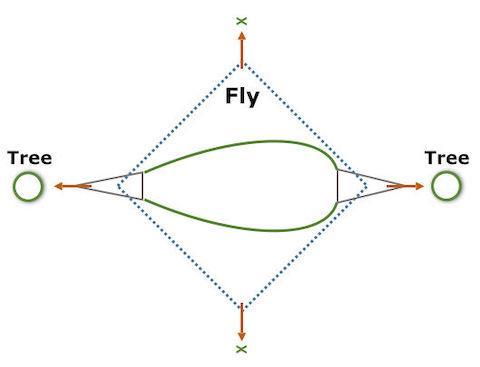Recent searches
Search options
I'm starting a thread on #HammockCamping...
Feel free to comment and even tell me where I'm wrong, or if there's a better solution.
I'll start with the big one... how many lines/ropes/straps should it take to fully pitch a #HammockTent?
I have a strong bias that the answer is no more than four!
I propose a general "Four Point Hammock Suspension Rule" (two straps for the hammock itself (with bug net), no more than two for the rainfly)
Note that the fly does not need to be diamond shaped, this is a general rule-of-thumb.
My point is: if you have more lines you increase complexity, increase time pitching and repacking, decrease access, and have more things to trip over.
Put another way: If you get the same performance with fewer lines, that is a good thing.
If more lines are required to achieve the same performance, that may indicate a weaker design.
https://mdpaths.com/rrr/camping/hammocks/hammock_guide/index.html#s3
@nickrauchen I agree on the points of simplicity.
But when it's going to rain or snow heavily with wind then larger tarp with more tie-out points provide better shelter. I'm not really fan of flying water inside the shelter.
For nice summer weather single 3x3m tarp as diamond on top of hammock works great. But for worse weather I'm going to get 4x4m square tarp so I can do A-frame. Or maybe hex tarp.
"But when it's going to rain or snow heavily with wind then larger tarp with more tie-out points provide better shelter."
No doubt! You argue for both more complex and LARGER tarps for more intense/complex situations. I agree.
My issue is more the other side of the coin... manufacturers making the "default" or fair weather tarp SMALLER and more complex. My opinion is that this reflects marketing needs (being able to claim "lightest" or "under X-ounces", etc.), and not the performance of their products in the field.
From the sounds of it you are camping in rougher conditions than I am, so of course you gear-up accordingly.
Thanks!



